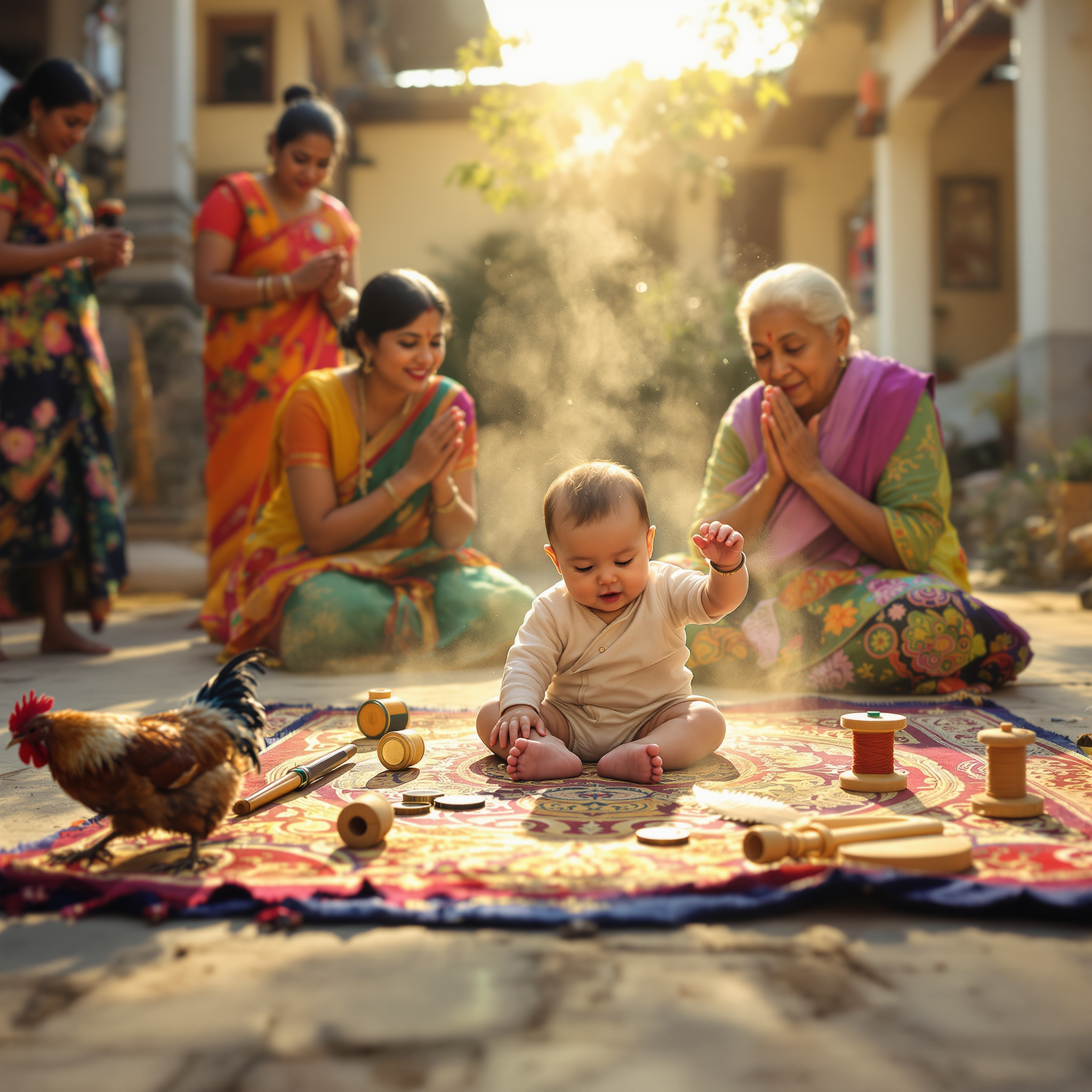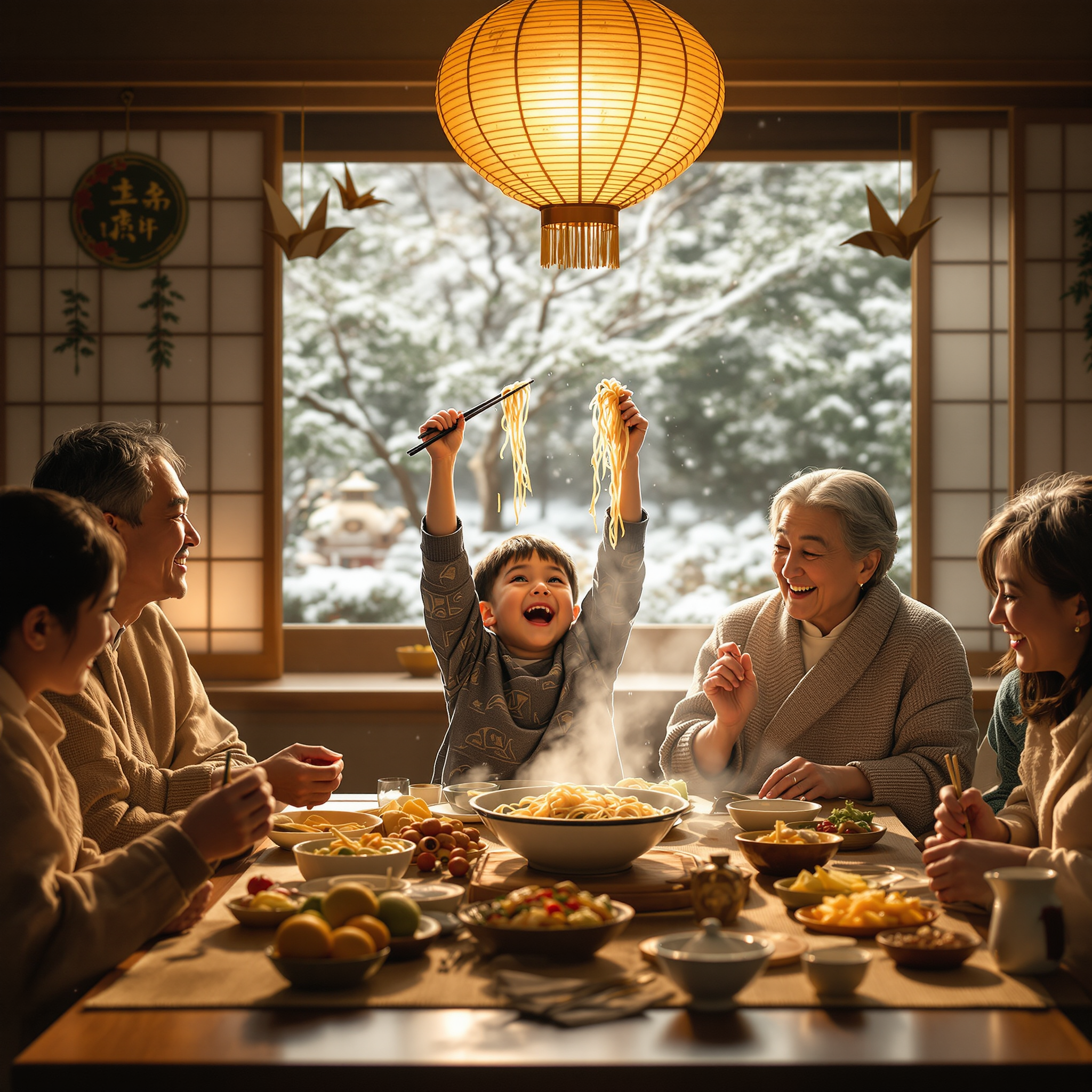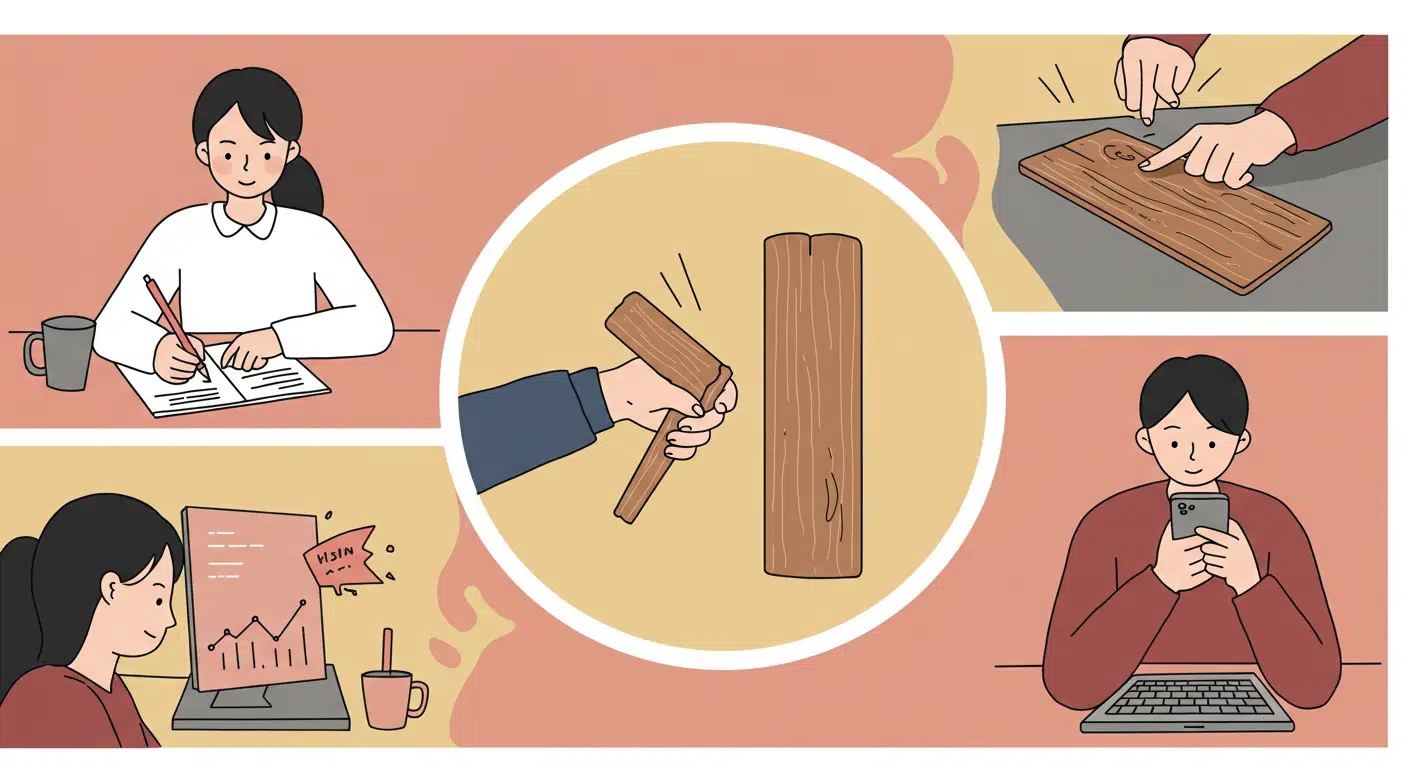In countries like China and Japan, it is traditional to eat long noodles during New Year’s celebrations. These noodles, often referred to as ‘longevity noodles’ (chángshòu miàn in Mandarin), are typically made from wheat flour and can be served in broth or stir-fried. The key symbolic aspect is the noodle’s length, representing a long and prosperous life. It is considered very important not to cut or break the noodle while cooking or eating, as this could symbolically ‘cut short’ one’s fortune or life. This practice is typically performed as part of a festive family meal that includes a variety of symbolic dishes meant to attract wealth, happiness, and health for the coming year. The meal usually takes place on New Year’s Eve or New Year’s Day, coinciding with the Lunar New Year.

A baby’s future career or fate is predicted by the first object they select during a ceremonial setup.
In several Asian and Eastern European cultures, a traditional ceremony is held for babies usually around their first birthday. Known


